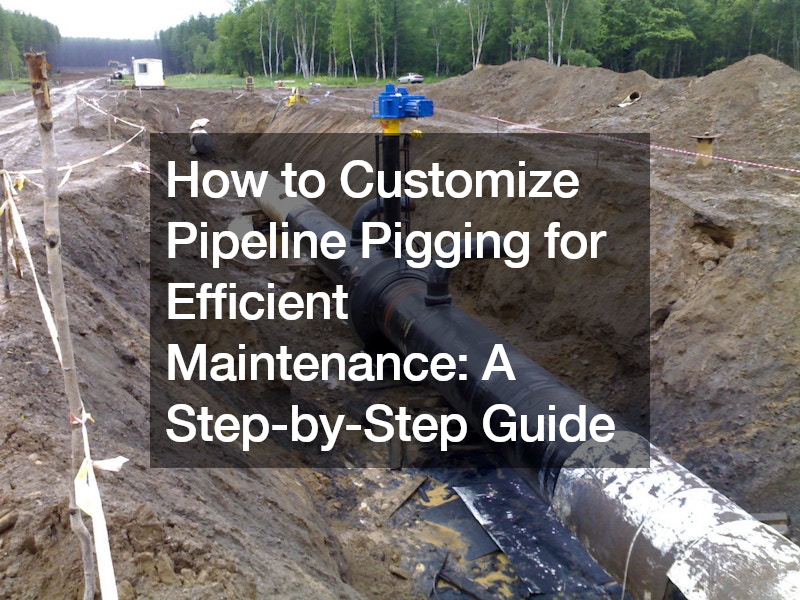Pipeline pigging is a critical operation in the oil and gas industry, serving various functions essential for maintaining pipeline integrity and efficiency. These cylindrical or spherical devices, or pigs, are inserted into pipelines and propelled by the product flow, effectively “scrubbing” the interior walls to remove debris, sediment, and other contaminants. While the term “pig” may evoke images of the farm animal, in the context of pipelines, it stands for “Pipeline Intervention Gadget”
Usage in Oil and Gas Business
In the oil and gas industry, where vast networks of pipelines transport hydrocarbons over long distances, pipeline pigging plays a crucial role in ensuring operational reliability and safety. Here’s how pipeline pigging is utilized in various aspects of the oil and gas business:
Cleaning and Maintenance: Over time, pipelines can accumulate deposits such as wax, scale, rust, and other contaminants, which can impede flow, reduce efficiency, and increase the risk of corrosion. Pipeline pigging is used extensively for cleaning and maintenance, helping remove these deposits and restore pipelines to optimal operating conditions.
Inspection and Testing: Besides cleaning, pigs equipped with various sensors and measurement devices are employed for inspection and testing. These”smart pigs” can detect defects, anomalies, and irregularities in the pipeline wall, such as corrosion, cracks, dents, and weld defects. This information is critical for identifying potential integrity threats and prioritizing maintenance activities.
Batch Separation and Product Recovery: In multiproduct pipelines where different commodities are transported sequentially, pigs are used for batch separation to prevent product mixing and contamination. Additionally, pigs equipped with product recovery systems can effectively remove residual products from pipelines, minimizing waste and maximizing efficiency.
Pipeline Commissioning and Decommissioning: During pipeline commissioning, pigs are used to ensure cleanliness and integrity before introducing hydrocarbons. Similarly, during pipeline decommissioning, pigs are employed to remove residual product and prepare the pipeline for safe abandonment or repurposing.
Hydrostatic Testing: Pipeline pigging is also utilized in hydrostatic testing procedures to assess pipeline integrity and verify its ability to withstand pressure. Pigs are used to displace water or other testing fluids, ensuring thorough coverage and accurate test resultsUnderstanding Pipeline Pigging
Before delving into customization, it’s essential to grasp the basics of pipeline pigging. Pipeline pigging involves using devices known as pigs to clean, maintain, test, and inspect pipelines. These pigs, typically made of materials like polyurethane or rubber, come in various shapes and sizes tailored to different pipeline specifications.
The Customization Process
Assessment and Planning: The customization journey begins with a thorough assessment of pipeline requirements. Factors such as pipeline diameter, fluid type, and specific maintenance tasks are carefully evaluated to determine the most suitable pig design and materials.
Material Selection: Custom pipeline pigs are tailored to meet the unique needs of each pipeline. Materials with varying hardness, flexibility, and durability may be chosen to optimize performance and longevity.
Design Optimization: Engineers use advanced technologies to tailor the pig’s shape, size, and features for maximum effectiveness. Design parameters are optimized to ensure seamless operation and minimal disruption to pipeline flow.
Testing and Validation: Custom pipeline pigs undergo rigorous testing and validation to ensure reliability and efficacy. Performance tests simulate real-world conditions to validate design parameters and identify potential issues.
Manufacturing and Production: Once design specifications are finalized, production begins using advanced manufacturing techniques. Custom pipeline pigs are fabricated precisely and consistently, meeting the highest quality standards.
Deployment and Operation: Custom pigs are deployed using specialized launchers and receivers. They are introduced into the pipeline and propelled through the system by the flow of products. Advanced tracking and monitoring systems enable operators to track real-time pig movement and performance.
Significance of Custom Pipeline Pigging
Custom pipeline pigging offers several key advantages:
Enhanced Efficiency: Tailoring pigs to specific pipeline requirements ensures optimal cleaning and maintenance, minimizing downtime and maximizing operational efficiency. Improved Safety: Custom pigs reduce the risk of accidents, leaks, and environmental hazards, enhancing safety for personnel and the environment. Cost Savings: By optimizing pig performance and longevity, custom pipeline pigging helps reduce maintenance costs and extends the lifespan of pipeline infrastructure. Environmental Protection: Effective pigging practices mitigate the risk of spills and contamination, safeguard the environment, and comply with regulatory requirements. Conclusion
In conclusion, custom pipeline pigging is vital for maintaining the integrity and efficiency of pipelines in the oil and gas industry. Operators can ensure efficient cleaning, inspection, and testing processes by customizing pigs to meet specific pipeline requirements, contributing to safe and reliable pipeline operations. Embracing customized pigging solutions enhances operational efficiency, safety, and environmental protection, ensuring a sustainable energy infrastructure for the future.
This step-by-step guide provides valuable insights into the customization process, empowering operators to optimize pipeline performance effectively. With custom pipeline pigs, maintenance becomes not just a necessity but an opportunity to drive efficiency, safety, and sustainability in the oil and gas industry.
.


